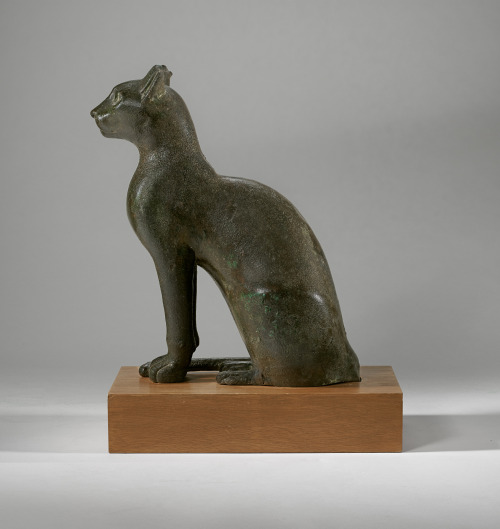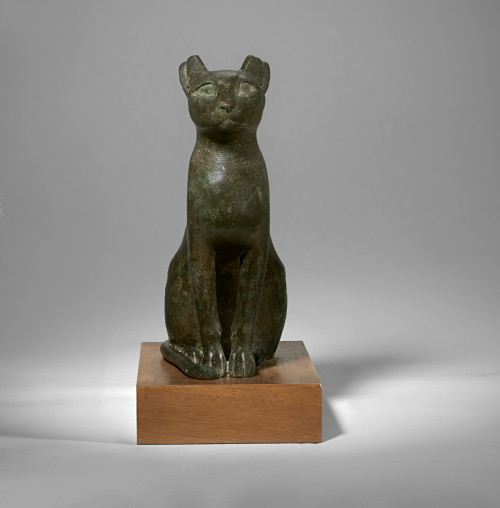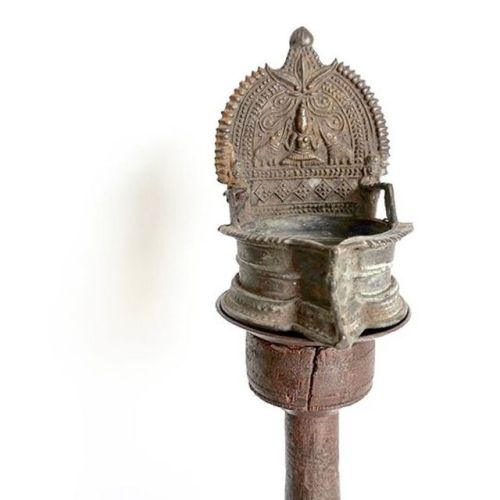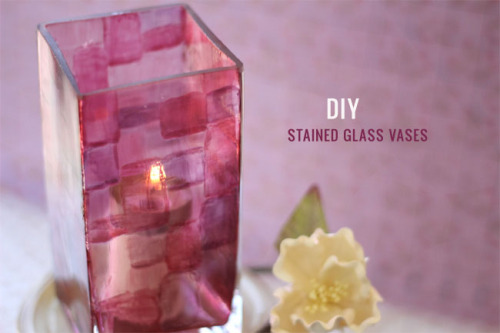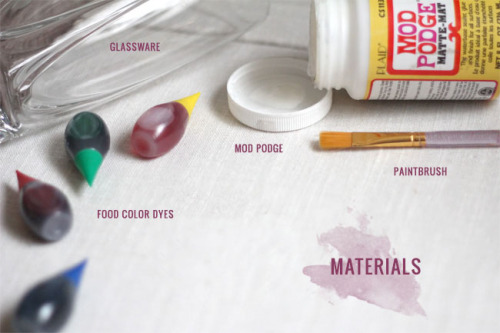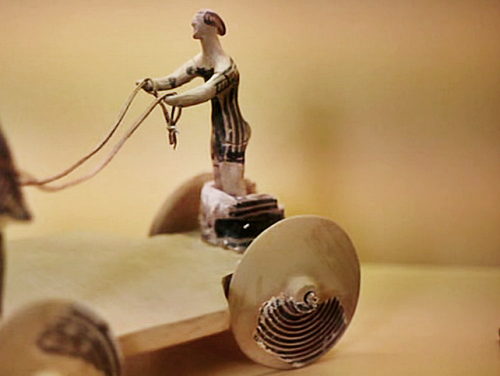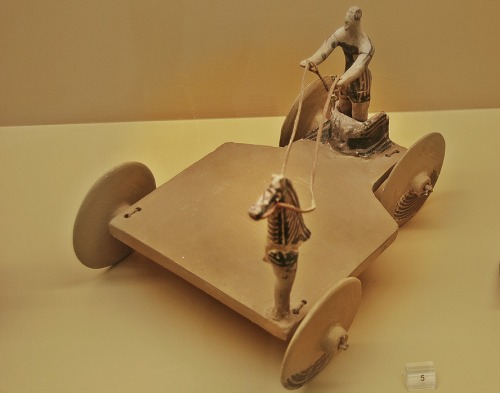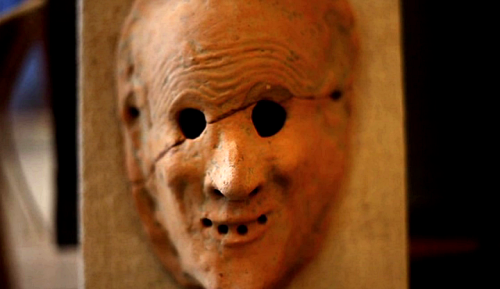#votive
-Jackal Wrs / Wos / Was Scepter-
This King comes indeed, an imperishable spirit, adorned with Anubis on the neck, who presides over the Western Height.
This is a Wrs scepter / Wos scepter because of the jackal head. WAs scepters were symbolistic objects “held by gods to show Their authority, Their power, or Their strength, or a combination of all three. There are was-scepters that were occasionally used by kings; a number of them were buried in the tomb of Nisut Tutankhamen for example. Usually however this is a strictly ceremonial object.”
For sale:
Etsy
If you want to see what pieces I’m working on, what is new and up and coming as well as get first chances at any of my work, please follow me on our Patron.
Patron
Senebty,
Iseqi
Daughter of Amun-raandSet
Beloved of Hethert-SekhmetandHeru-Wer
Post link
Ivory ex-votos found at the sanctuary of Artemis Orthia, Sparta, made in the form of protomes and depicting the goddess crowned. Now in the National Archaeological Museum, Athens. Photo credit: Marsyas/Wikimedia Commons.
Post link
Silver skillet, with a highly decorated handle and some gilding. The bowl is deep, with slightly incurving walls forming a constriction in the line of the profile below the small everted rim.
The general theme of the decoration is the traditional one of acanthus scrolls and flowers, with some elements picked out by gilding. The central area of the handle carries the inscription MATR FAB / DVBIT in bold, neat lettering. The outlines of the letters are filled with a roughened surface to provide a key for the heavy gilding, perhaps more accurately termed ‘gold inlay’, which survives on the V, B and T of 'DVBIT’.
The skillet, part of the Backworth Hoard, bears a votive inscription dedicated to the Mother-Goddesses by a Fab(ius) Dubit(atus?).
The history of this hoard is obscure. We know that it was found around 1811, but not where it was found. The hoard was said to have included about 280 coins, but all but one of these, and probably other objects, were dispersed before The British Museum was able to acquire what was left of the treasure in 1850. The surviving coin is a denarius of Antoninus Pius (reigned AD 138-161) issued in AD 139.
The treasure was probably a votive deposit at a shrine of the Mother-goddesses near the eastern end of Hadrian’s Wall.
1st - 2nd century AD
© The Trustees of the British Museum
Post link
Phoenician Votive Figure
Circa: 600 BC to 500 BC
Dimensions: 15″ (38.1cm) high
Medium: Terracotta
Origin: Lebanon
This outstandingly beautiful and well-preserved ceramic sculpture is a votive figure from the middle of the first millennium BC, and represents a Phoenician deity. It depicts a goddess standing on an integral base, which bears an offerings bowl (partly obscured by calcareous concretions), her right hand raised and her left hand at her throat. However, it is the quality of the artistry and the almost miraculous preservation which makes this sculpture so remarkable, for most of the details that can be seen here have been eroded in other examples. The face is exceptional, carved with a serene expression and a half smile, with lidded eyes, a long nose and rounded cheeks.
Post link
Bronze metal mechanical Lotus. When closed up it is a Lotus bud, opened it is in full flower and has a cup inside for holding a votive or incense. India style ornamentation, stands upon a turtle base.
To open, hold the bud and spin the bottom half toward you. To close, hold the petals closed and spin away from you.
Dimensions: 6-¼" x 3-½"
Weight: 1 lb 3 oz
.
.
.
.
.
#etsyshop #bronzelotus #incenseburner #votive #stonehouseartifacts #linkinprofile
(at Bellingham, Washington)
https://www.instagram.com/p/By_Fhn1JVcH/?igshid=w29u8uzmvf0q
Post link
Old Bronze Kamashi. This is an oil lantern, made as a votive. Fill base with oil and light a cotton wick.
.
.
.
.
.
.
#kamakshi #bronzelamp #oillamp #hindu #altar #votive #beautifuloldthings (at StoneHouse Artifacts)
https://www.instagram.com/p/BzHDl6upFO9/?igshid=1v3n9icx5xtfq
Post link
Ancient Worlds - BBC Two
Episode 3 “The Greek Thing”
A chariot driven by a charioteer. Terracota figurine. Votive offering from the 8th century BC on display at the Ancient Agora Museum ofAthens.
The Ancient Agora Museum is housed in the -reconstructed- Stoa of Attalos (a stoa was a covered portico) in the Agora of Athens, built c. 150 BC. The exhibition in the museum gallery holds archaeological finds from the ancient Agora. The collection of the museum includes clay, bronze and glass objects, sculptures, coins and inscriptions from the 7th to the 5th century BC. The earliest antiquities, potsherds, vases, terracotta figurines and weapons, dating from the Neolothic, Bronze Age, Iron Age and Geometric period, come from wells and tombs excavated in the area of the Athenian Agora and its surroundings.
Terracota figurines were a mode of artistic and religious expression, familiar objects to the ancient Greeks. Figurines are found in settlements, in graves and shrines. They stood in houses as mere decorations, or served as cult images in small house shrines. Some of them functioned as charms to ward off evil, others were brought to temples and sanctuaries as offerings to the gods and deposited in graves either as possessions of the deceased, gifts, or protective devices.
Ancient Agora Museum, Stoa of Attalos, Athens, Greece
Post link
Richard Miles Archaeologist
ONE DAY, ONE IMAGE
Clay mask (7th-6th centuries BC) from the sanctuary of Artemis Orthia, Sparta.
Archaeological Museum of Sparta, Sparta, Greece
Post link










